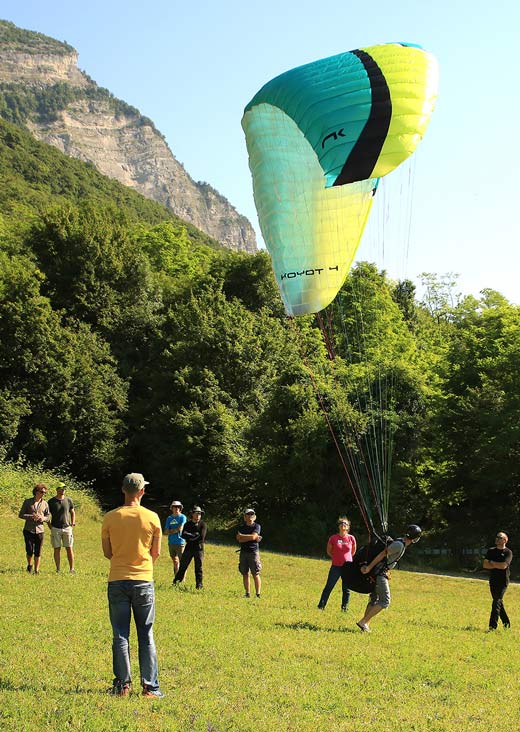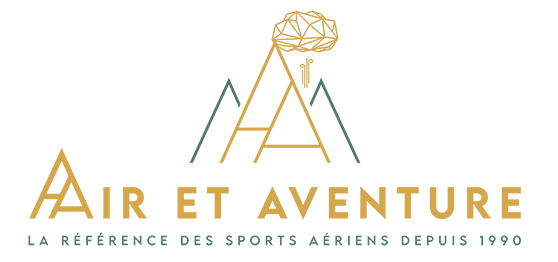Paragliding alone : how do you become autonomous in flight ?


The adventure of paragliding captivates anyone seeking to touch the sky while remaining connected to the earth. However, paragliding requires more than just an adventurous desire; it requires rigorous training, learning and continuous practice in take-off, landing and piloting. This training can be provided during paragliding courses at specialized schools. This article aims to guide aspiring paraglider pilots along the path to autonomous flying.
PARAGLIDING INITIATION COURSE
The first step on the road to paragliding autonomy often begins with an introductory course. Paragliding schools offer introductory courses that allow newcomers to immerse themselves in the world of free flight, so that they can begin this activity in complete safety. These courses cover the basics, including the theory of flight mechanics, learning how to handle the equipment on the ground, and of course, the first paragliding flight to discover the flying sites and the different meteorological and aerological conditions in the air.
Introductory courses enable future pilots to familiarize themselves with the paraglider, the essential paragliding equipment, under the careful supervision of an experienced instructor. This is a crucial stage in learning to fly and paraglide safely. At the end of the course, however, it's not enough to consider a pilot autonomous. Even if they are technically capable of going flying, they still lack a whole range of analysis and knowledge of paragliding-related items such as aerology and flying techniques. That's why additional theory courses provide an opportunity to learn even more about flying, as well as invaluable advice on the weather, different flights, radio use and much more!

PARAGLIDING COURSE TO BECOME AUTONOMOUS
After acquiring the basic skills, the progression course is the next step towards autonomy. The aim of this course is to reinforce the skills acquired during the introductory course and to introduce new ones, necessary for flying autonomously.
Paragliding progression courses
These courses are designed to complete the pilot's initial course. Theoretical knowledge is reinforced, decision-making in simple flight situations is gradually left to the pilot, still under the supervision of the instructors, and in-flight simulations (exercises) enable the pilot to experience sensations related to what he or she will encounter in real-life situations during solo flights.
By the end of this second course, pilots are beginning to be equipped to envisage autonomy in solo situations, in calm air conditions, on a known site.
Advanced paragliding courses
These courses are designed to give you the tools you need to improve your flying and analysis skills. The aim is to make you autonomous in a variety of flying situations, such as flying to a new site and doing your own analysis, flying in a variety of aerological conditions, positioning yourself correctly in the thermals, etc.
Significant progress in paragliding
-
First solo flights : At this stage, pilots learn to fly alone with increasing autonomy. With the ongoing support of our instructors, pilots learn to cope with different aerological conditions and to make decisions in flight. You will also be given exercises related to the various transient movements you will encounter in flight.
-
First thermals : Exploiting thermals, those rising currents of warm air, is a key paragliding skill. Pilots will learn to identify and use them to gain altitude and extend their flights.
-
Discovering a new spot alone : Discovering new flying spots is an exciting part of paragliding. It allows pilots to fly and test their skills in different environments and conditions.
-
First cross-country flights : Cross-country flights are an advanced stage. Here, pilots are confronted with several advanced technical aspects, such as positioning, routing, transitions, hang-ups, etc. By mastering all these skills, pilots are able to make flights lasting several hours and hundreds of kilometers.
To become an autonomous paraglider pilot, continuous learning is essential. Paragliding schools offer a range of courses to guide pilots through the various stages of their learning. From initiation to autonomous flight, each stage is crucial to becoming a competent and safe paragliding pilot.
Age is also a factor to consider. Paragliding ages vary, but with the right training, support and commitment, autonomous flying is an attainable goal. Saint Hilaire du Touvet, a popular spot, is an excellent place to start and progress your paragliding journey. With a renowned paragliding school, experienced instructors and a supportive learning environment, becoming self-sufficient in paragliding is an exciting and rewarding adventure that will give you the pleasure of flying.
By following the steps outlined and committing to ongoing paragliding practice, aspiring pilots can look forward to achieving autonomy in flight, discovering the thrills that open the door to limitless freedom in the skies and flying in complete safety.
CONSULT OUR COMPLETE GUIDE TO PARAGLIDING PROGRESSION :
Paragliding, discover and progress : the complete guide to improving your paragliding skills
Progressing in paragliding : how to improve in free flight ?
Paragliding distance flight : how to prepare ?
Cross paragliding : how to learn this type of flight ?
Paragliding Gliders to progress : what equipment should you choose ?
Price of a beginner paraglider : what is the average cost of equipment ?







